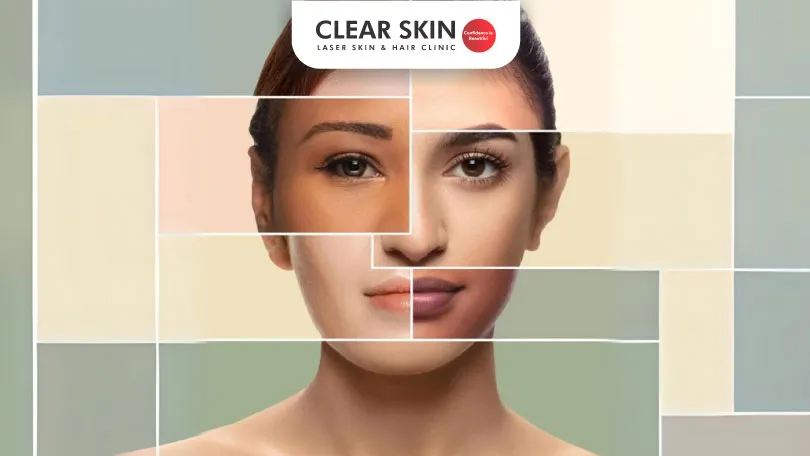Reviewed By:
Updated on: 14th August, 2023
We all love to have healthy and glowy skin, but it’s not an easy task. Talking about skin, following a good skin regime is of utmost importance. Give yourself at least 10 mins every day to glowing skin. We have seen many of them don’t know their skin type and how to know how to recognize their skin.
In today’s answer, let’s discuss skin type in detail:

Table Of Content
- Types of Skin
- Skin Type Test
- Conclusion
Types of Skin
Normal Skin: This skin type is such a blessed skin type, and can suit all climate conditions. All kinds of products suit your skin and don’t have any dark spots or pigmentations and impressions on your skin. These skin types generally have no open pores and have radiant-looking skin. They have a good balance of moisturizing, skin texture, and beautiful even tone skin.
Oily Skin: This skin type is really difficult to maintain due to excess oil secretion on our skin. Our face looks duller, pale, and oily all the time. Oily skin is prone to developing lots of acne, blackheads, and clogged pores and it’s really difficult to balance it out. If you are having oily skin then your forehead, nose, and chin will look more shiny and oily, due to excess oil secretion. Oily skin also needs to apply moisturizer as your skin also needs a moisturizer to hydrate your skin.
Dry Skin: Another difficult skin type is dry skin the skin looks more dry and dull, cracks can be seen, and fine lines and wrinkles. Your skin tries to become more sensitive and which leads to redness. It’s important to take care of your skin throughout the year to have a better skin condition. Mostly dry skin can be seen on your cheeks, hands and legs, or feet. Chronic skin dry can have dry scales as well.
Combination Skin: In this skin condition, it’s seen some parts of your face are oily, normal, or dry. In this mostly you can see your forehead and nose are oily and prone to have lots of acne and blackheads. The T zone area looks oilier in a combination of skin conditions. Your cheeks remain to have normal skin; regardless your chin looks duller due to dry skin. So it becomes more difficult to take care of your skin.
Let’s discuss a few tips to have healthier skin;
- Wash your skin only 2 times a day and not more, as your skin loses natural hydration.
- Don’t use harsh soaps or any products.
- Application of any Broad-spectrum sunblock is important of SPF 30.
- Use a good moisturizer that suits your skin type.
- Don’t touch your skin every time as it might infect your skin.
- Use a mild cleanser for your face.
- Always clean your face at night before going to bed.
- Don’t scrub your face every day.
- Proper sleep of 6 to 8 hrs is required.
- Drink 3 to 4 liters of water every day.
Skin Type Test
You’ve seen the various skin types. However, how to know your skin type at home? Let’s answer this question. You can do a simple skin type test at home to know your skin type. Here’s how to do it.
The most straightforward one is the blotting paper method. It helps you differentiate between an oily and dry skin type.
Take a blotting paper and gently pat it on various areas of your face. See the sheet up in light to determine the amount of oil visible. You have a dry skin type if there’s very little or no oil on the sheet. However, you have oily skin if the paper shows a lot of oil. On the other hand, if the paper shows oil from the forehead and the nose area, you have a combination skin type.
Conclusion
Popular Q&As
Learn how glycolic acid and isotretinoin can help treat acne scars. Dark lips can be caused by sun exposure, dehydration, smoking, or lifestyle factors. Understand the reasons and find expert solutions at Clear Skin Clinic, Pune. Diet plays a good role to decrease melanin in your body.
Tips for Fair and Glowing Skin for Oily Skin Types
Why are my lips dark?
How to Reduce Melanin Production in Skin Naturally?
We Got Your Back! Ask Us Anything On Your Mind!
Reach out to us on
Didn’t Find What You Were Looking?
Please Contact Us.
We are committed not only to treating you, but also educating you.

